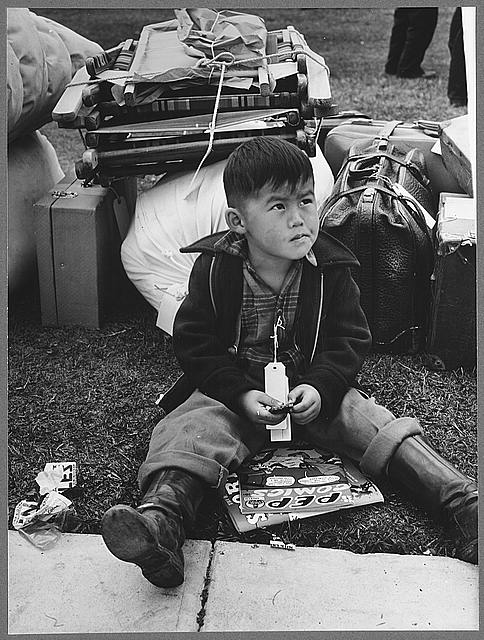
FDR Authorizes Incarceration of Japanese Americans
Executive Order 9066 authorized removal of Japanese Americans from designated military zones on the West Coast and their detention in internment camps.
View newspaper articlesDomestic concerns in the United States, including unemployment and national security, combined with prevalent antisemitism and racism, shaped Americans’ responses to Nazism and willingness to aid European Jews. The economic devastation of the Great Depression, combined with isolationist attitudes and deeply held prejudices against immigrants, limited Americans’ willingness to welcome refugees. Many issues that the American public perceived as having a critical impact on their livelihoods, security, and core values vied for public attention during this time and affected the manner in which Americans responded to events at home and abroad.
Between 1861 and 1940, approximately 275,000 Japanese immigrated to Hawaii and the mainland United States.
When the Empire of Japan attacked Pearl Harbor on December 7, 1941, lobbyists from western states, many representing competing economic interests or nativist groups, pressured Congress and the President to remove persons of Japanese descent from the west coast, both foreign born (issei – meaning “first generation” of Japanese in the US) and American citizens (nisei – the second generation of Japanese in America and US citizens by birth) under the pretext that they were a national security threat. During Congressional committee hearings, Department of Justice representatives raised constitutional and ethical objections to the proposal. As a result, the US Army, rather than civilian law enforcement, carried out the task. On February 19, 1942, President Franklin D. Roosevelt issued Executive Order 9066 authorizing exclusion, and Congress implemented the order on March 21, 1942, by passing Public Law 503.
The West Coast was divided into military zones. After encouraging voluntary evacuation of the areas, the Western Defense Command began involuntary removal and detention of West Coast residents of Japanese ancestry. During the next six months, approximately 120,000 men, women, and children were moved to assembly centers. They were then evacuated to and confined in isolated, fenced, and guarded camps, euphemistically known as "relocation centers." The ten relocation centers were in remote areas in six western states and Arkansas: Heart Mountain in Wyoming, Tule Lake and Manzanar in California, Topaz in Utah, Poston and Gila River in Arizona, Granada in Colorado, Minidoka in Idaho, and Jerome and Rowher in Arkansas.
Nearly 70,000 of the evacuees were American citizens. The government made no charges against them, nor could they appeal their incarceration. All lost personal liberties; most lost homes and property as well. Although several Japanese Americans challenged the government’s actions in court cases, the Supreme Court upheld their legality. Nisei were nevertheless encouraged to serve in the armed forces, and some were even drafted. Altogether, more than 30,000 Japanese Americans served with distinction during World War II in segregated units.
[Excerpted from "Documents from the National Archives: Internment of Japanese Americans" [Dubuque, Iowa: Kendall/Hunt Publishing Company, 1989] pp. 9–10.]
Learn More about this Historical Event
- Teaching with Documents: Documents and Photographs Related to Japanese Relocation during World War II (National Archives)
- Japanese Relocation and Internment During World War II (National Archives)
- The War Relocation Centers of World War II: When Fear Was Stronger Than Justice (National Park Service)
- The War Relocation Authority and the Incarceration of Japanese-Americans During World War II (Harry S Truman Library and Museum)
- Japanese American Incarceration and Japanese Internment (Densho: Preserving Stories of the Past for Generations of Tomorrow)
Search tips
These dates and keywords are associated with this historical event.